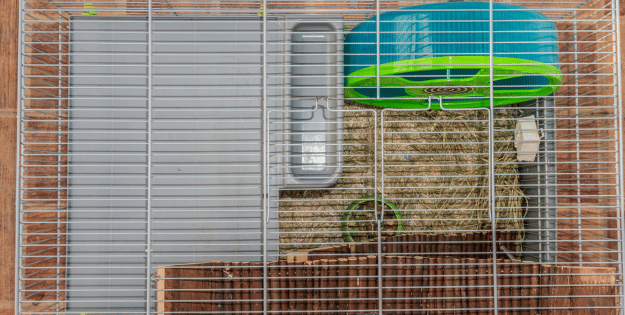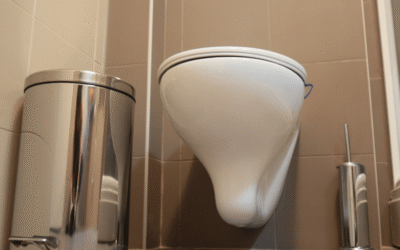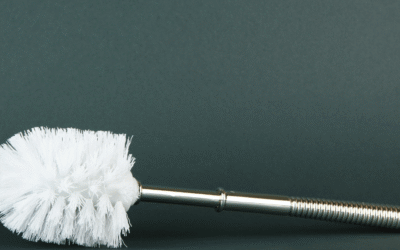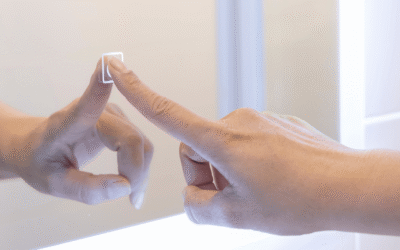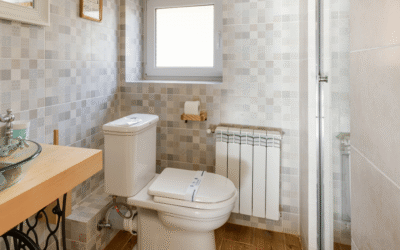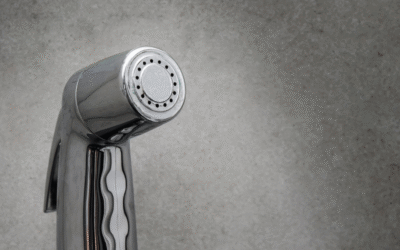Welcoming a new hamster into your home is an exciting adventure, but ensuring they have everything they need is crucial. A well-prepared environment not only keeps your furry friend comfortable but also supports their health and happiness. Before your hamster arrives, it’s essential to gather the right equipment to create a safe and stimulating habitat.
From a suitable cage to high-quality food, the list of essentials is comprehensive yet manageable. Investing in proper bedding, a water bottle, and toys for enrichment can make all the difference in your pet’s well-being. With an estimated initial cost of around £115, setting up a hamster-friendly home is both affordable and rewarding.
While some items are non-essential, like gnawing blocks or a sand bath, they can enhance your hamster’s quality of life. These additional supplies, costing about £50, offer extra comfort and entertainment. Preparing thoroughly ensures your hamster’s new home is a haven of joy and exploration.
Top Amazon Sellers
Key Takeaways
- A comprehensive hamster equipment list ensures a safe, comfortable, and stimulating habitat, promoting your pet’s well-being and happiness.
- Essential items include a spacious cage, bedding, a water bottle, a food bowl, and an exercise wheel, each contributing to the hamster’s health and comfort.
- Providing diverse toys, such as chew toys and climbing structures, encourages mental stimulation and keeps hamsters physically active.
- Proper bedding and substrate choices are crucial, with recommendations for safe materials that support natural behaviours like burrowing.
- Routine cleaning and maintenance with pet-safe products are vital for a healthy and hygienic living environment.
- Additional accessories, such as sand baths and carry cages, enhance quality of life and offer practical solutions for grooming and travel needs.
Essential Hamster Equipment
The primary item in the hamster equipment list is the cage, offering a secure and spacious environment. Bedding ensures comfort and absorbs waste, while a water bottle supplies constant hydration. A food bowl helps in managing feeding schedules and maintaining cleanliness. Exercise is crucial, so an exercise wheel in the cage can keep the hamster active. Engage their mind with toys that encourage climbing and exploring. Include chew toys to maintain healthy teeth. Nesting material provides a cosy spot to rest and hide. Ensure a well-balanced diet with fresh food and hamster-specific treats, important for nutritional balance. Cleaning products, designed to be non-toxic, maintain a hygienic habitat. Each element contributes to a hamster’s well-being by catering to its physical and mental needs.
Choosing the Right Hamster Cage
Selecting an appropriate cage ranks high on any hamster equipment list. It’s crucial to provide a spacious cage for your hamster to roam and play; aim for a minimum of 360 square inches of floor space. Enclosures with multilevel designs benefit active pets by offering more exercise options. For dwarf hamsters, ensure bar spacing is no wider than 1 cm to prevent escapes. Although convenient, wiretop cages may need careful examination as larger gaps can be problematic. Modular cages with tubes, while amusing, are often harder to clean and lack sufficient ventilation. Regular cleaning, approximately weekly, maintains hygiene. Opt for a design that’s easy to clean and offers escape-proof security, ensuring a safe and comfortable environment for your hamster.
Bedding and Substrate
Bedding and substrate materials support a clean and comfortable hamster habitat. Substrate lines the cage bottom, offering a soft surface and moisture absorption. Wood shavings or soft materials like specially formulated fluffy compounds work well, while avoiding sawdust, which poses respiratory risks due to dust. Bedding materials, softer than substrate, assist in nesting and are typically housed within the hamster’s hideout.
At least 10 cm of bedding depth fosters natural burrowing instincts and aids in odour control by efficiently absorbing moisture. Safe bedding includes paper or teabag strips and shredded aspen. Substrate variety can enhance your hamster’s environment, offering sensory enrichment and mimicking their natural habitat. Implement a main bedding area for burrowing, supplemented with strategic substrate zones for exploration.
Food and Feeding Supplies
Ensuring a hamster’s nutritional health involves selecting the right supplies. This selection forms a crucial part of the hamster equipment list.
Water Bottles and Food Bowls
A shallow, chew-resistant bowl serves well for both food and water. Bowls should be sturdy to prevent tipping and shallow enough to avoid the hamster slipping into them. Water bottles offer a spill-proof option, maintaining hydration without frequent spills.
Selecting the Best Hamster Food
High-quality pelleted food ensures a nutritionally balanced diet. Pellets prevent selective eating, unlike mixes where hamsters might choose only favoured pieces. Daily feeding is recommended with any fresh food removed after a few hours to prevent spoilage.
Toys and Enrichment
Enhancing a hamster’s environment with diverse toys and enrichment options can reduce boredom and encourage physical and mental stimulation. A well-rounded hamster equipment list includes several important elements.
Exercise Wheels and Balls
Exercise wheels keep hamsters active, aiding in their physical health. A minimum diameter of 28 cm is recommended to prevent back injuries. Exercise balls offer another form of mobility, but supervision is essential to ensure safety.
Chew Toys and Climbing Structures
Chew toys are crucial for dental health, mitigating continuous tooth growth. Safe wooden or mineral items are ideal. Climbing structures encourage explorative behaviour, adding layers of engagement to the habitat.
Hideouts and Tubes
Hideouts provide a sense of security and mimic natural burrows, enhancing the hamster’s comfort. Tubes contribute to mental stimulation and exploration, offering pathways that replicate natural tunnels. Implementing these elements creates a dynamic environment.
Cleaning and Maintenance Supplies
Cleaning supplies form a crucial segment of the hamster equipment list, ensuring a healthy living environment.
Safe Cleaning Products
Use products designed for pets to prevent harmful chemical exposure. Choose those free from irritants like ammonia and bleach. Ensure any residues are thoroughly rinsed to keep the habitat safe.
Routine Cleaning Practices
Weekly cleaning is essential for hygiene. Empty and wash the cage base with appropriate cleaners. Dry thoroughly before adding fresh bedding. Spot clean daily to remove uneaten food and soiled areas, maintaining a fresh and inviting habitat.
Additional Accessories
Expanding the hamster equipment list with additional accessories enhances the pet’s quality of life, ensuring both comfort and enrichment.
Sand Baths
Sand baths provide essential grooming, allowing hamsters to clean their fur naturally while reducing oil build-up and odour. A shallow dish with specialised sand is suitable, avoiding dust that can cause respiratory issues. Regular changes maintain hygiene and an enriching experience for the hamster.
Carry Cages
Carry cages offer a safe transport method, ensuring the hamster’s security during trips to the vet or when changing habitats. Opt for a hard-walled design that prevents escapes and allows airflow. Small openings are essential to avoid injuries, while ensuring discreteness during travel.
Conclusion and Top Picks
Welcoming a hamster into your home involves thoughtful preparation and careful selection of equipment to ensure their well-being. By investing in quality essentials like a spacious cage, nutritious food, and engaging toys, owners can create a nurturing environment that supports both physical and mental health. While initial costs might seem significant, the long-term benefits of a happy and healthy pet are invaluable. Additional accessories, though optional, can further enrich a hamster’s life, offering them opportunities for exploration and comfort. Ultimately, a well-prepared home paves the way for a rewarding and joyful companionship with your new furry friend.
Frequently Asked Questions
How much does the initial setup for a hamster cost?
The estimated initial setup cost for a hamster is around £115. This includes essential items such as a suitable cage, high-quality food, bedding, a water bottle, and toys. While some additional accessories can enhance your hamster’s quality of life, budgeting for these essentials ensures a healthy and happy environment for your new pet.
How large should a hamster cage be?
A hamster cage should provide a minimum of 360 square inches of floor space. This size allows the hamster adequate room to roam and play. For active pets, multilevel designs are recommended. Ensure bar spacing is no wider than 1 cm especially if housing dwarf hamsters to prevent escapes.
What type of bedding is recommended for hamsters?
Recommended bedding materials include wood shavings or specially formulated fluffy compounds. Avoid sawdust to prevent respiratory issues. It’s advised to have at least 10 cm of bedding depth to allow natural burrowing behaviour and assist with odour control.
What diet is best for a hamster?
A balanced diet for a hamster includes high-quality pelleted food to prevent selective eating. Daily feeding is advised, with fresh food removed after a few hours to prevent spoilage. Water should be provided from a shallow, chew-resistant bowl or a spill-proof bottle.
Why are chew toys important for hamsters?
Chew toys are essential for maintaining healthy teeth in hamsters. Regular chewing helps wear down their continuously growing teeth, preventing dental issues. Additionally, chew toys offer mental stimulation and physical activity, reducing boredom.
How often should a hamster cage be cleaned?
Routine cleaning is vital for a healthy living environment. Weekly cage washing and daily spot cleaning are recommended. Use pet-safe cleaning products free from harmful chemicals like ammonia and bleach, and ensure thorough rinsing to eliminate residues.
Are sand baths beneficial for hamsters?
Sand baths are beneficial for grooming, helping hamsters clean their fur and reduce oil build-up. Use a shallow dish with specialised sand to avoid respiratory issues. It’s best not to keep the sand bath in the cage all the time to prevent skin dryness.
What is the best way to provide exercise for a hamster?
Exercise wheels with a minimum diameter of 28 cm prevent back injuries and promote active behaviour. Supervise exercise ball use to prevent accidents. Climbing structures and hideouts also encourage exploration and mental stimulation.

